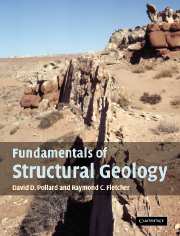Chapter 4 - Physical quantities, fields, dimensions, and scaling
Summary
Earth's crust under the state of Texas being lifted by a crane. Scaling laws demonstrate that the good state of Texas is utterly incapable of self-support. Reprinted from Hubbert (1945) by permission of the AAPG whose permission is required for further use.
In physical science a first essential step in the direction of learning any subject is to find principles of numerical reckoning and practical methods for measuring some quality connected with it. I often say that when you can measure what you are speaking about, and express it in numbers you know something about it; but when you cannot measure it, when you cannot express it in numbers your knowledge is of a meager and unsatisfactory kind: it may be the beginning of knowledge, but you have scarcely, in your thoughts, advanced to the stage of science, whatever the matter may be (Thomson, 1891).
In an insightful article about research in geology in the early twentieth century M. King Hubbert refers to Sir William Thomson (Lord Kelvin) as the “Patron Saint” of geologists, including himself, who espouse a quantitative agenda, and he cites this quotation from Thomson as their “guiding credo” (Hubbert, 1974). Thomson is not advocating numeration purely for the sake of collecting numbers; rather this is a call to measure relevant physical quantities and express them as numbers. Thomson was a physicist, not a geologist, but Hubbert recognized the importance of quantification in the geological sciences and was a leader among geologists of his generation in this regard (Hubbert, 1972).
- Type
- Chapter
- Information
- Fundamentals of Structural Geology , pp. 120 - 151Publisher: Cambridge University PressPrint publication year: 2005



